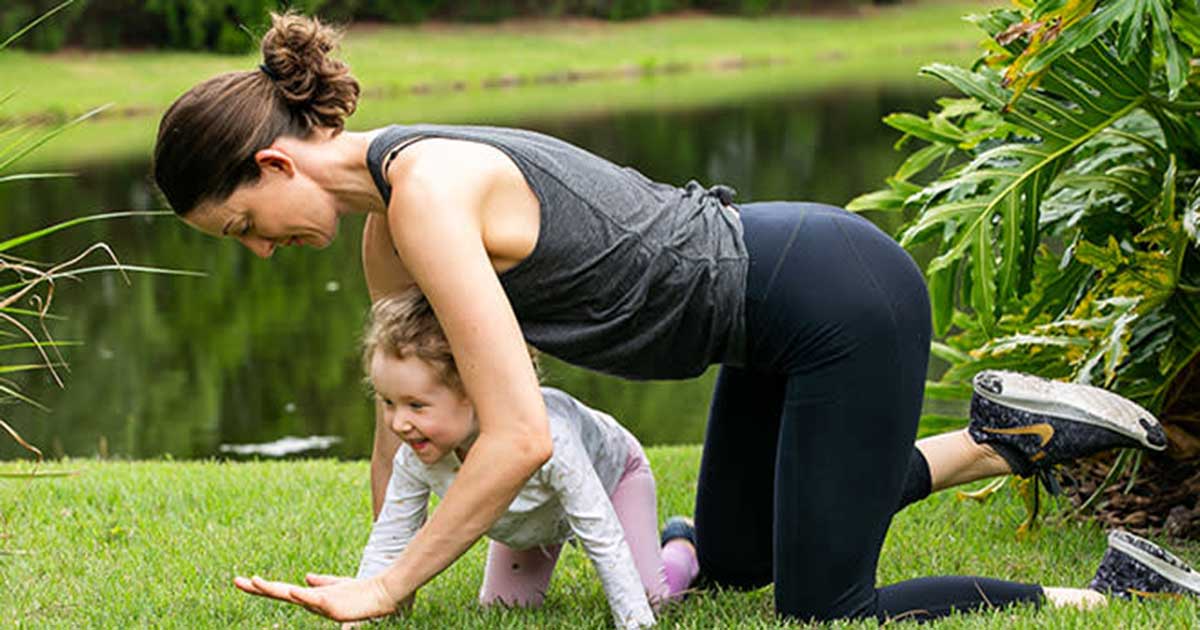If you still have that post-baby belly months after you’ve given birth, you may have torn your abdominal muscles. Here are seven gentle exercises to help heal your postpartum diastasis recti. Diastasis recti is a post-pregnancy condition where the linea alba (abdominal connective tissue) has separated. This connective tissue between our abdominal muscles is what holds them together, giving the appearance of a toned waist and slim tummy. Without the tissue intact, many mothers feel they have what’s commonly called the “mummy tummy,” which appears as a pouch in the lower belly area. Typically, the separation will lessen on its own within eight weeks after pregnancy, but if you engage in exercises that make it worse, it can cause lower back pain, and postural misalignments and make it more difficult to lift heavy objects or perform functional everyday tasks.
Instead, these seven gentle exercises can help heal your abdominal connective tissue to get you strong and tighten up your tummy

Start by taking the test below to find out if you have an abdominal separation. Then try the gentle core workout for diastasis recti and be sure to avoid the seven exercises that can make it worse. Note: Most physicians will recommend that you do not engage in any exercises until you are at least 6 to 8 weeks postpartum. Talk to your doctor and get the okay before starting a new routine. Here’s how to test your body to determine whether you have diastasis recti, and the width of your separation if you do have one.
Read More: Experts: Exercise Will Actually Make Your Cells Younger and Life Longer
The Diastasis Recti Test

- ie down on your back, knees bent, and feet about shoulder-width apart.
- Place two fingers on your belly about 2-3 inches above the belly button and the other hand behind the base of your head for support.
- Exhale as you lift your head and shoulders off the ground as if you’re doing an abdominal crunch. Contract your abs.
- Gently press your two fingers down on the Linea Alba (the connective tissue between your abs).
Results
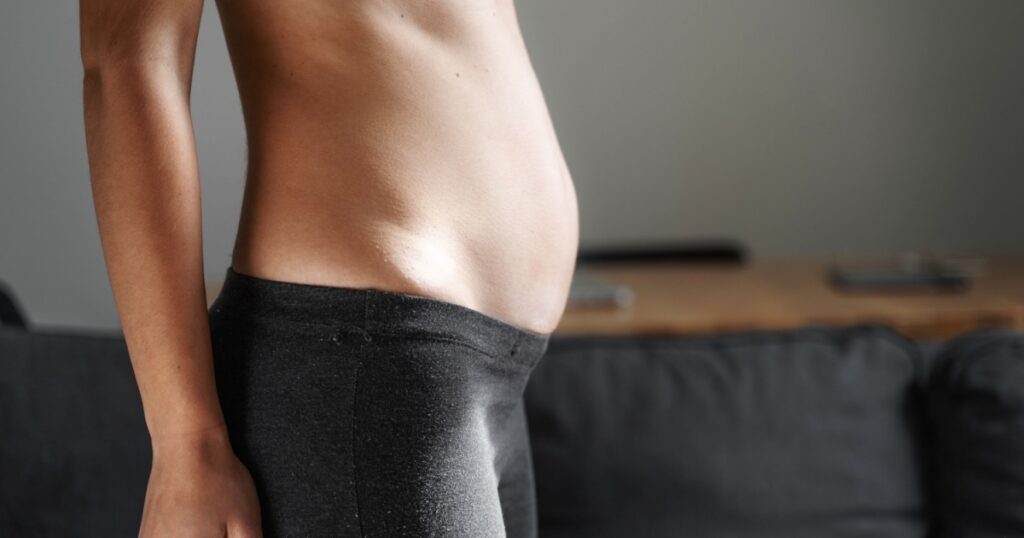
- Negative for Diastasis Recti: If you feel a hard surface with your fingers then your Linea Alba is intact.
- Positive for Diastasis Recti: If you feel a deep hole in the soft tissue, you may have Diastasis Recti. Next, very gently use your fingers to measure the size of the separation. The wider the gap, the more severe the case.
7 Gentle Exercises to Help Heal Diastasis Recti
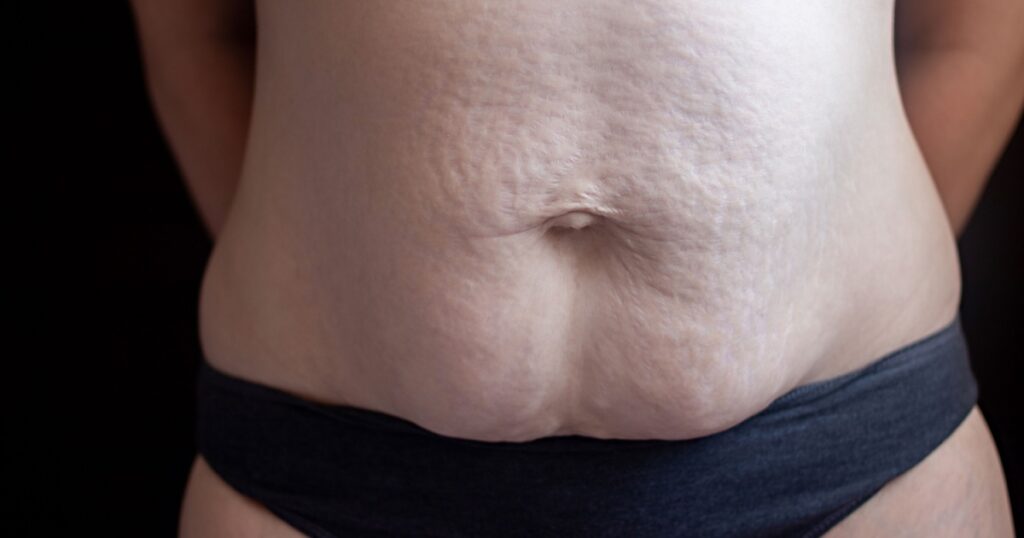
All you need for these exercises is a mat or a soft surface. Do these seven exercises as a sequence, then repeat the sequence 2-3 times for a complete workout. For best results, do this workout consistently 3x per week. Repeat the diastasis recti test once every two weeks to determine if your gap is closing. Skip any of these exercises that do not feel safe for you and instead focus on the ones that you feel are benefitting you the most.
Tabletop Legs Alternating Heel Drops | 5 reps per side

- Lie on your back with your arms out by your sides and palms flat on the floor.
- Lift your legs up to a tabletop position (knees bent to 90 degrees, shins parallel to the ground).
- Keeping your left leg stable, inhale to slowly lower your right heel to the ground.
- Engage your deep core muscles and exhale to bring your leg back up to the starting position.
- Continue alternating sides to do 5 full reps.
Side Knee Fall Outs | 5 reps per side

- Lie on your back with your arms out by your sides and palms flat on the floor.
- Bend your knees and plant your feet on the ground with your knees and feet together.
- Keeping your left leg stable, inhale as you slowly lower your right knee towards the ground as far as you can without allowing your foot to roll to the side or your hips to rock.
- Engage your deep core muscles and exhale to bring it back up to the starting position and press your knees together.
- Continue alternating sides to do 5 full reps.
Half Side Plank | 10 breaths per side

- Start by lying on your side.
- Bend your knees to a 90-degree angle and form a straight line with your body from your shoulders to your knees.
- Press up onto your forearm and place your top arm on your hip.
- Tighten up your core muscles and breathe deeply.
- Hold this position in good form for 10 deep breaths, then switch to the other side.
Read More: Could Exercise Prevent Arthritis? New Research Is Hopeful
Seated Tummy Flex | 10 breaths

- Get into a comfortable seated position.
- Place one hand on your belly and the other hand on your hip.
- Sit up tall and lengthen your torso.
- Keeping your posture tall, take a deep breath and allow your tummy muscles to relax completely.
- Exhale and flex your stomach as you imagine the gap between the abdominals closing. You may even wish to place your fingers directly on the gap to draw your attention here.
- Continue inhaling and relaxing and exhaling and flexing for 10 deep breaths.
Lying Palms to Knees Press | 10 breaths

- Lie on your back and lift your legs up to tabletop position (knees bent to 90 degrees, shins parallel to the ground).
- Place your palms on your knees.
- At the same time as you are pressing into your knees with your palms, use your knees to press into your palms.
- Imagine you have two grapes between your palms and knees and you need to press hard enough to make grape juice.
- Engage your deep core muscles and continue to press in both directions as you breathe.
- Keep your head, neck and shoulders relaxed on the ground as you focus only on the sensations in your core muscles. This should not feel like a strain.
- Inhale and exhale deeply for 10 breaths as you maintain good form.
Supine Bird Dog | 5 reps per side

- Lie on your back and lift your legs up to tabletop position (knees bent to 90 degrees, shins parallel to the ground).
- Raise your arms straight up and point your fingertips to the ceiling.
- Take a deep inhale as you slowly stretch your left leg out long in front of you and your right arm up over your head.
- Stop once your arm and leg are about one foot off the ground.
- Exhale as you bring them back to the starting position.
- Alternate sides and continue for 5 reps per side.
Hip Bridges | 10 reps
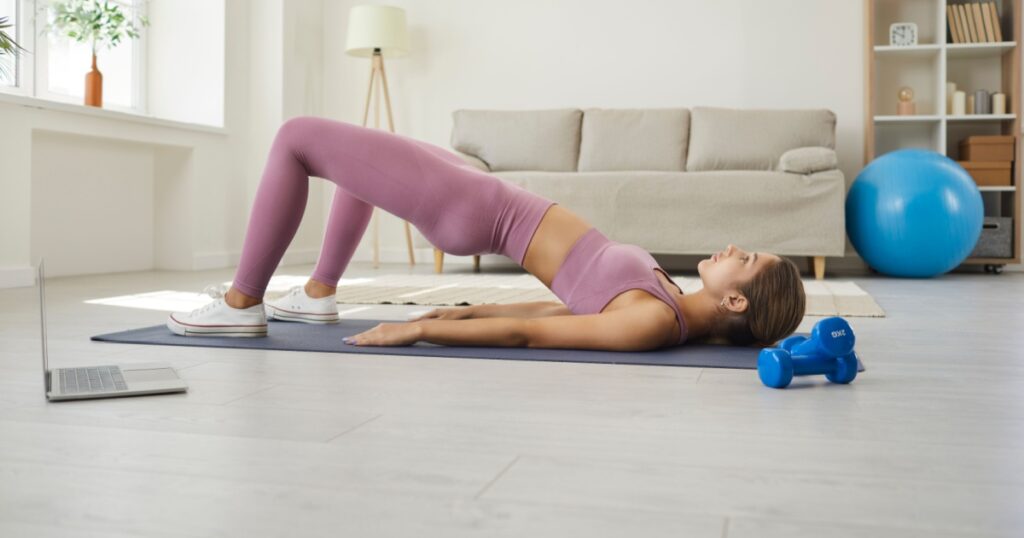
- Lie on your back and plant your feet flat on the floor with your knees bent.
- Place your hands out to your sides with palms down for support.
- Walk your heels in until they are just below your knees.
- Press your feet into the floor and lift your hips up.
- Flex your abs and butt muscles at the same time to form a straight line from your shoulders to your knees. It’s important not to overarch the back. At the top of the movement, your abs should be flexed and core tight.
- Slowly lower down to the starting position. Repeat to perform 10 reps.
7 Exercises To Avoid When You Have Diastasis Recti
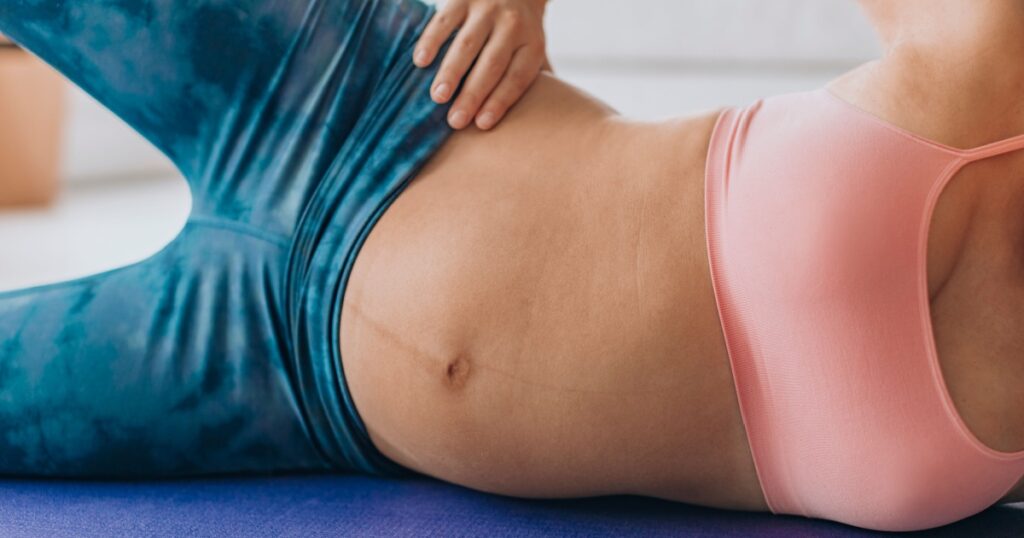
These seven core exercises should be avoided for any woman who is currently pregnant and/or tests positive for diastasis recti. Because of the tension and/or gravity on your abdominal muscles during these exercises, diastasis recti may be promoted or become worse if doing these exercises during or after pregnancy. Stick with the gentle core exercises above if you are pregnant (even if you’re not showing yet) and/or if you’ve tested yourself as positive for abdominal separation. Avoid: Crunches, Sit-Ups, Planks, Abdominal Twists (any kind of twisting), Leg Lifts, Full Push-ups (without incline or modification), and Quadruped Positions.
Read More: 13 exercises for Knee Pain and Which Ones to Avoid
